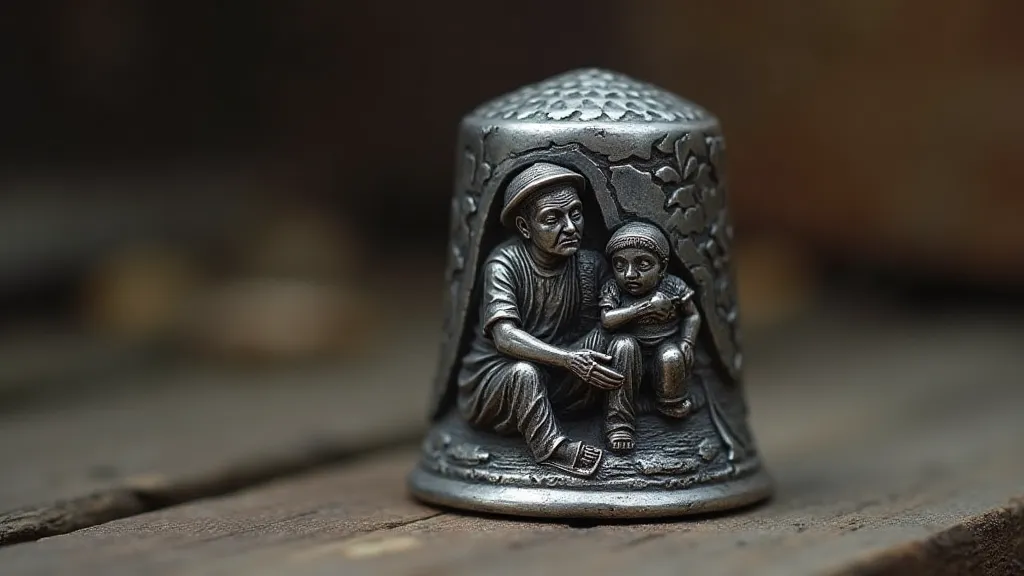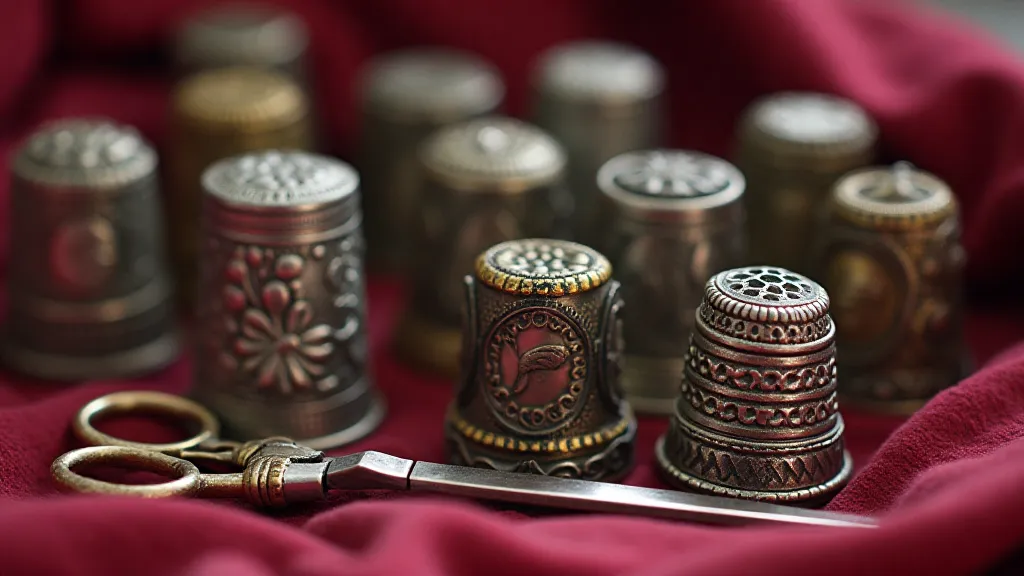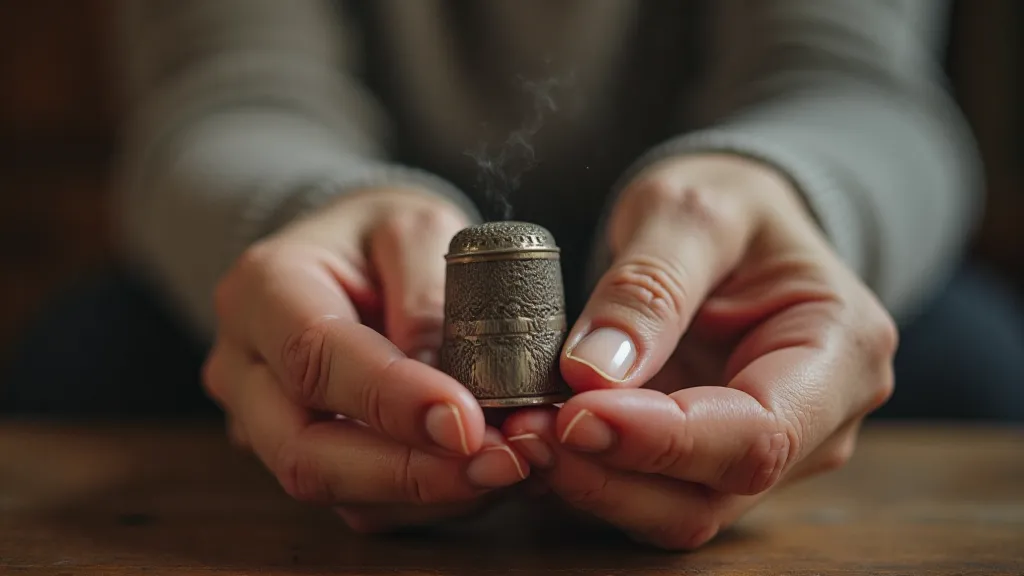Beyond the Needle: Thimbles as Miniature Stages for Social Commentary
The tiny world of antique thimbles often conjures images of grandmothers' sewing boxes, meticulously organized collections, and the comforting click of needle through fabric. We admire their intricate designs, marvel at the skill required to create them, and appreciate their historical significance as essential sewing tools. But what if I told you that some of these diminutive treasures held a deeper, more subversive story? That they weren’t just about sewing, but about subtly conveying social or political messages – a unique form of miniature protest, a whisper of dissent in a silent world?
My own fascination with thimbles began not with a love of sewing, but with a dusty box discovered in my grandmother’s attic. Alongside buttons and lace, it contained a collection of thimbles, each bearing a different image – a portrait of a queen, a depiction of a bustling market, a playful scene of farm animals. It was a world unto itself, and I was captivated. Later, I learned some weren’t merely decorative; they were carefully crafted vessels for sharing viewpoints, often disguised as innocent collectibles.
The Humble Thimble: A Tool of Necessity & a Canvas for Expression
To understand how thimbles became vehicles for social commentary, we need to understand their history. From ancient times, cultures across the globe have used protective coverings for fingers during sewing. Early versions were simple leather or cloth, evolving into metal – brass, silver, and later, more affordable materials like zinc alloy. The Victorian era (1837-1901) witnessed a boom in thimble production, spurred by the rise of mass manufacturing and the burgeoning middle class, many of whom embraced sewing as both a necessity and a leisure activity. This perfect storm of accessibility and popularity created an ideal platform for disseminating messages beyond the purely functional.
The early 20th century solidified this trend. The rise of photo-engraving made it possible to reproduce images onto metal surfaces with increasing fidelity and affordability. Suddenly, thimbles could bear elaborate portraits, landscapes, and scenes that served as miniature storytelling devices. And who controlled the narrative? Manufacturers, certainly, but also individuals willing to push boundaries, to use these small objects to share their perspectives.

Subtle Messages in Miniature: Deciphering the Code
The beauty of these ‘protest’ thimbles lies in their subtlety. They rarely featured overt slogans or inflammatory imagery. Instead, they relied on symbolism, allegory, and carefully chosen scenes to convey their message. A thimble depicting factory workers, for instance, might not directly criticize working conditions, but the weary expressions of the figures, the cramped setting, and the monotonous repetition of their tasks spoke volumes.
Consider the rise of the Suffrage movement. While openly displaying political views could be dangerous, thimbles offered a discreet channel. A thimble portraying a woman holding a ballot box, or featuring a symbolic image of female empowerment (like a blossoming flower), might seem innocuous on the surface. But for those "in the know," it was a clear signal of solidarity and a quiet declaration of support for the cause.
Similarly, depictions of rural life, often idealized in promotional materials, could be subtly skewed to highlight the plight of tenant farmers or the exploitation of agricultural laborers. A seemingly charming pastoral scene could contain hidden details – a broken fence, a gaunt animal, a worried landowner – all hinting at a deeper underlying tension.
Craftsmanship and Collectibility: Beyond the Narrative
Beyond their social significance, antique thimbles are also remarkable examples of craftsmanship. Early thimbles were often hand-wrought from sterling silver, showcasing the skill of the silversmith. Later, mass production techniques allowed for greater accessibility, but the quality of engraving and detailing remained a mark of prestige. Identifying a "good" thimble isn't just about the imagery; it's about the precision of the engraving, the clarity of the details, and the overall aesthetic appeal.
Restoration is a delicate matter. Because of their small size, harsh cleaning methods can easily damage the delicate engravings. The ideal approach is gentle cleaning with specialized metal polishes and a careful assessment of any damage. Many collectors prefer to leave the patina – the natural aging – intact, as it adds to the thimble’s character and history. The patina tells a story of its own.

A Legacy of Whispers: Continuing the Search
The world of antique thimbles is more than just a collection of charming trinkets. It’s a portal to the past, a glimpse into the social and political landscape of bygone eras. Each tiny object holds a story, often subtle, sometimes poignant, always intriguing. While obvious overt political messaging is rare, the ability to read the “subtext” – the nuances, the hidden details – allows us to appreciate the ingenuity and resourcefulness of those who sought to express themselves, even within the confines of a small, metallic form.
My grandmother’s box of thimbles wasn’t just a collection; it was an invitation to delve deeper, to uncover the hidden narratives woven into these miniature stages for social commentary. It’s a journey I continue to enjoy, always searching for that next whisper of dissent, that next glimpse into the lives of those who dared to speak, even in miniature.






